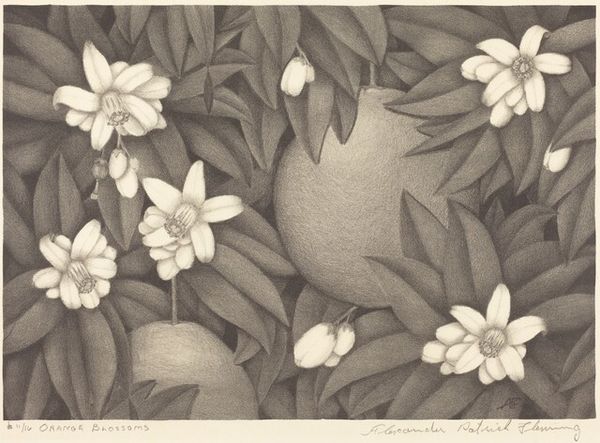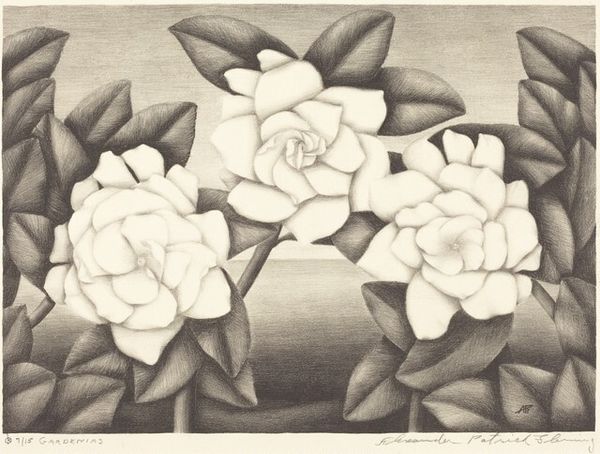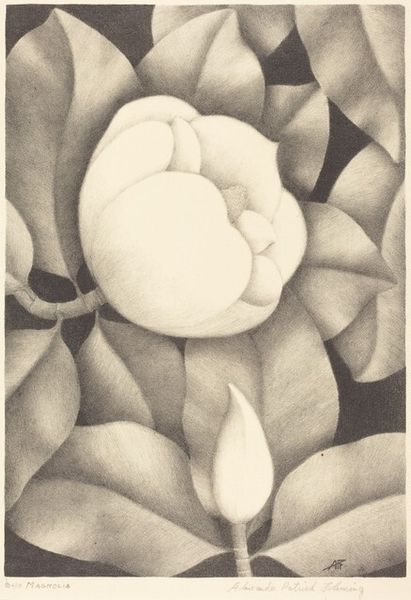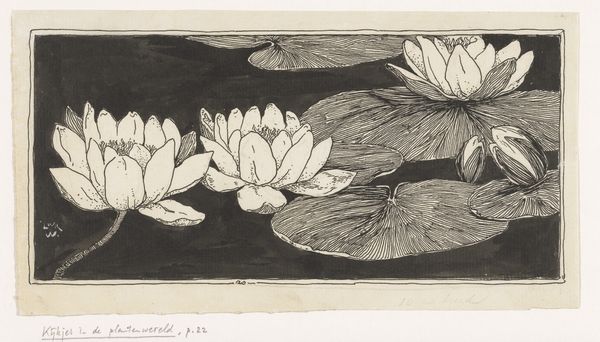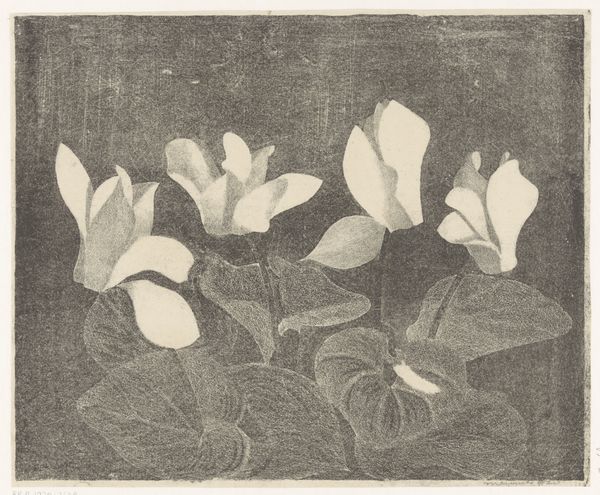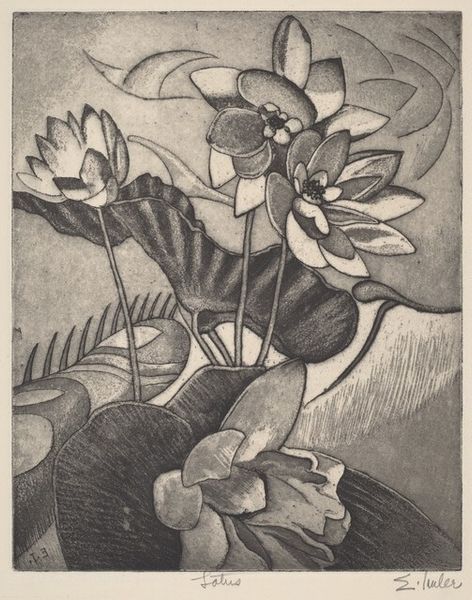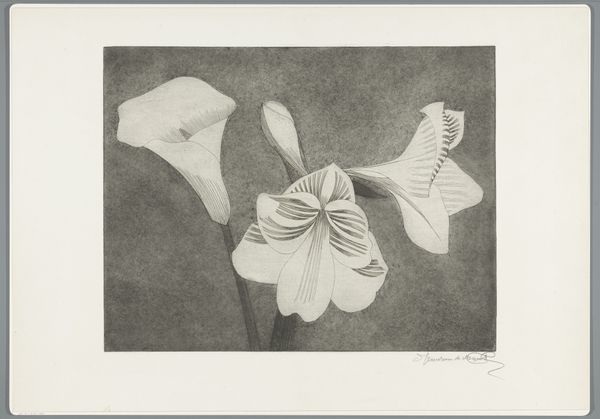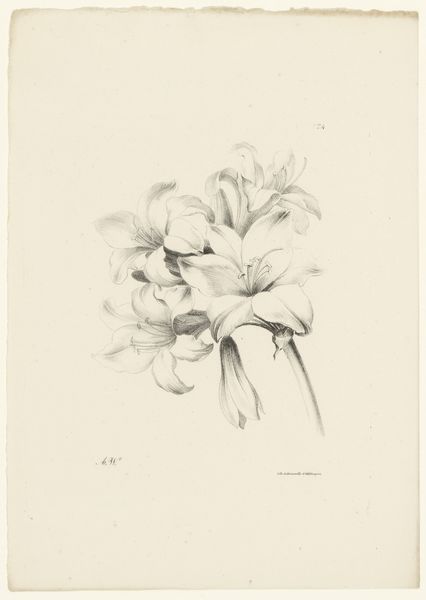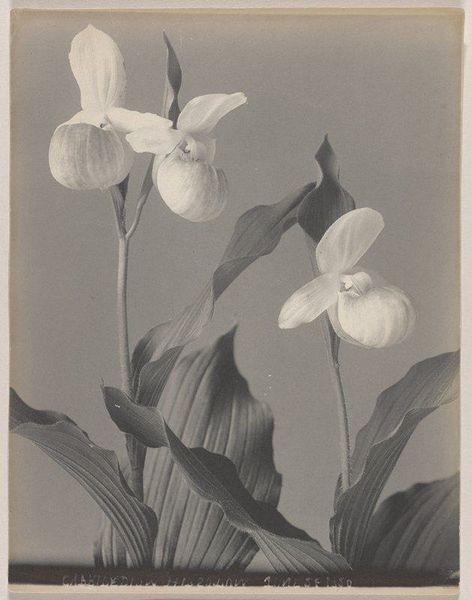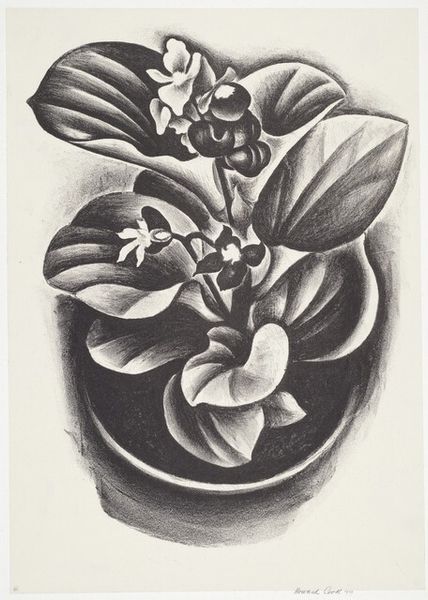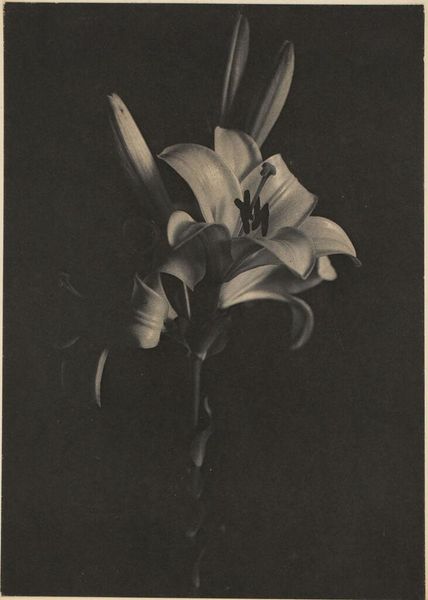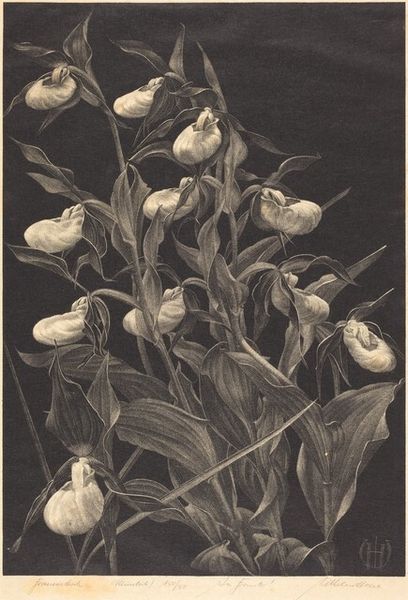
drawing, print, graphite
#
drawing
# print
#
floral photography
#
botanical photography
#
surrealism
#
graphite
#
realism
#
flower photography
Copyright: National Gallery of Art: CC0 1.0
Editor: Here we have Alexander Patrick Fleming’s drawing and print, “Cactus Flowers.” The monochromatic palette gives it a very subtle and almost ghostly beauty. What do you see in this piece beyond just a realistic depiction? Curator: The beauty you noticed is undeniable, but let's delve into the context. Cacti often symbolize resilience, survival in harsh environments. Think about the socio-political implications: Does the delicate rendering of these hardy desert flowers speak to the quiet strength of marginalized communities facing adversity? Or the tenacity of nature in a world reshaped by resource extraction and climate change? What do you make of that relationship? Editor: I see your point! I didn't think about the symbolism of the cactus itself, just the aesthetic beauty of the flowers. Perhaps the artist is commenting on the juxtaposition of fragility and strength? Curator: Exactly. And it goes further than just that simple binary. The cactus and flower are dependent on each other, right? I think we have to look at how this tension comments on environmental sustainability or the human impact on such ecosystems. The botanical drawing, here, invites conversation regarding our responsibilities toward ecological preservation, cultural erasure, environmental justice, and more. Does realism inherently enforce observation or extraction? Editor: I never thought of botanical art that way, as being linked to larger environmental or social justice issues. It makes me think about how art can subtly carry powerful messages. Curator: Absolutely. It prompts us to consider who gets to see beauty and under what conditions. Editor: This has totally changed how I will approach botanical drawings from now on. I will have to ask more questions about their intentions and the context of the work.
Comments
No comments
Be the first to comment and join the conversation on the ultimate creative platform.
